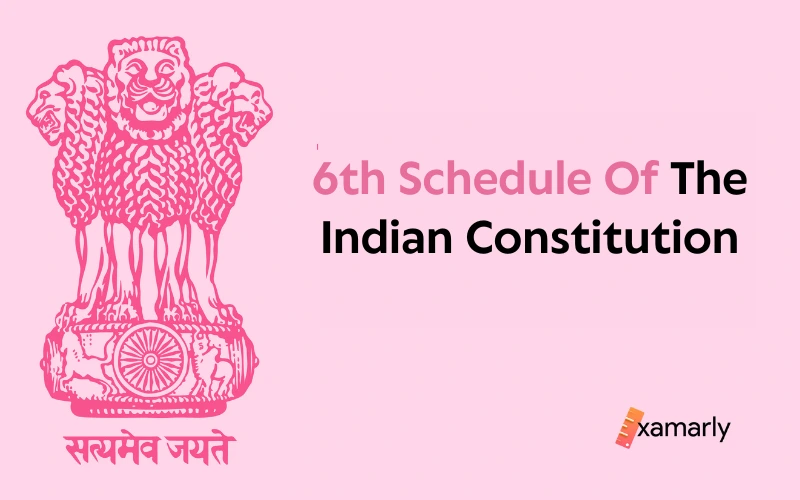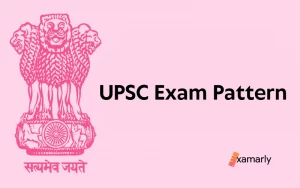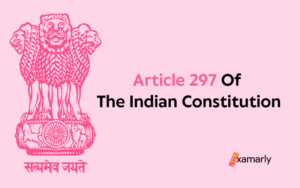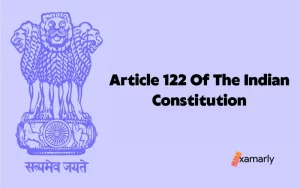The administration of some tribal areas is covered by provisions within the scope of the 6th schedule of the Indian Constitution. Certain specified tribal regions may be keenly administered and described as independent entities under the provisions of the Sixth Schedule. The Indian Constitution’s Articles 244(2) and 275(1) include some major provisions. These are regarding the states of Tripura, Assam, Mizoram, and Meghalaya of the sixth schedule.
This article will discuss the Sixth Schedule of the Indian Constitution for the IAS Exam. The Indian Polity component of the UPSC Syllabus can benefit from this material.
- Background
- 6th Schedule Of The Indian Constitution
- Features
- Important Provisions
- Tribal Areas Under The Sixth Schedule Of The Indian Constitution
- Administration of Tribal Areas
- Significance Of Special Provisions
- 5th Schedule VS 6th Schedule Of The Indian Constitution
- Issues Related To The Sixth Schedule
- Conclusion
- FAQs
- Why 6th Schedule Of The Indian Constitution Is Framed?
- What Are The Benefits Of The 6th Schedule?
- Which Article Provided The 6th Schedule?
- How Many States Are In The 6th Schedule?
- Who Is The Father Of The Sixth Schedule?
- When 6th Schedule Was Added?
- Who Can Exclude Or Include Areas In The Sixth Schedule?
- Which State Is Not Included In The Sixth Schedule?
- What Is The Objective Of The Schedule In The Constitution?
Background
- The former major state of J&K was subsequently divided into two partitions of Union Territories on August 5, 2019, and lost its unique status ( Jammu and Kashmir, along with Ladakh).
- Intellectuals and politicians from the area have at times expressed concern about the demographics, the land, and the distinctive culture of Ladakh. It was by claiming that statehood with a legislature would be able to provide them with the required safeguards.
- Ladakh should be an integral part of the 6th Schedule of the Indian Constitution. It is according to a recommendation made in September 2019 by the National Commission for Scheduled Tribes.
- The newly established Union Territory of Ladakh is mostly a tribal area of the nation, the Commission noted.
- More than 97 percent population in the Ladakh region belongs to the tribal.
6th Schedule Of The Indian Constitution
The 1997-enacted Ladakh Hill Development Council Act is being called for to be changed. Ladakh needs protection for its land, economy, and cultural identity. It is along the lines outlined in schedule 6 of the Indian constitution.
It is necessary to specify the roles and responsibilities of the federal government. It is also for the Union Territory administration and the Lieutenant-Governor. It aspires to preserve Ladakh’s demographics, natural environment, and distinctive culture.
Features
- To protect the rights of the tribal community in these states, it lays out the rules of administration of tribal areas in Mizoram, Tripura, Assam, and Meghalaya.
- Constitution’s Article 244(2) and Article 275(1) has several authentic and unique provision offered.
- It aims to preserve the rights of the native population (ADC). It is done by creating autonomous district councils. ADCs are organizations. They represent a district to which the state legislature has granted varying degrees of autonomy.
- For the sole reason of practicing some legislative and judicial powers, various provisions were provided. It is for the establishment of district councils as well as regional councils. Their jurisdiction, however, is limited by the High Court in question.
- There is a specific provision if all parties are Scheduled Tribe members and the maximum sentence is less than five years in prison. They have the sole authority to set courts to hear the matter.
- Additionally, they have the actual authority to charge general taxes for the proper upkeep of schools and roads as well as taxes. It considers taxes on employment and income, property, buildings, animals, cars, boats, entry of commodities into the territory, ferries, and bridges.
- Autonomous districts along with autonomous regions are exempt from a variety of the provisions of the Acts of Parliament or the State Legislature. Also or they do so with specific modifications and exclusions.
- The Governor is given authority over the councils. He or she may:
- Include or exclude any new area after public notice.
- Make a new autonomous neighborhood.
- Define any autonomous district’s borders.
- The size of an existing autonomous district may be increased or decreased.
- Change any autonomous district’s name.
Important Provisions
To preserve the rights of the indigenous community some steps have been taken. It is done by setting up Autonomous District Councils while the Constituent Assembly was established in 1949. Here, the key clauses of the Indian Constitution’s major schedule i.e. the sixth schedule have been emphasized.
- ADCs are organizations that, by the constitution, represent a district. And they have varying degrees of autonomy inside the assembly of the state.
- These state governors have several authorities. It includes the authority to alter the boundaries of the tribal regions.
- The boundaries can be altered, areas can be added or removed, and two or more independent districts can be combined into one.
- The autonomous regions’ titles may also be replaced or altered by the Governor without the need for new legislation.
- The Sixth Schedule mandates different Regional Councils. It is for each territory designated as an independent region with ADCs.
- There are ten independent districts in the Northeast. There are three each in Tripura, Assam, Mizoram, and Meghalaya.
- Each autonomous district as well as the regional council may have a maximum of 30 members, with the governor designating four and electing the remaining members. Each of them is in office for five years.
- The Bodoland Territorial Council has a maximum of 46 members. Out of 46, 40 are elected, which is a significant outlier.
- Regarding the remaining six seats in the Bodoland Territorial Areas District, the governor proposes candidates from some underrepresented groups. It left 35 seats (out of the 40 seats available) for STs and non-tribal populations (BTAD).
- The ADCs have civil as well as judicial authority. They can establish village courts to hear cases involving tribes under their control.
- The state governors listed in the sixth schedule designate the high courts’ jurisdiction. It is done in each of these situations.
- With the governor’s approval, the councils can also pass laws on issues like fisheries, real estate, forestry, entertainment, public health, social security, and others.
Tribal Areas Under The Sixth Schedule Of The Indian Constitution
Part I(Assam)
- The North-Cachar Hills District (Dima Halong)
- The Karbi-Anglong District
- The Bodoland Territorial Area District
Pat II(Meghalaya)
- The Khasi Hills District
- The Jaintia Hills District
- The Garo Hills District
Part III(Tripura)
The Tripura Tribal Areas District
Part IV(Mizoram)
- The Chakma District
- The Mara District
- The Lai District
Administration of Tribal Areas
By the 6th schedule of the Indian Constitution, independent district councils and regional councils with distinct legislative, executive, judicial, and financial powers may be established.
However, these District councils and Regional Councils have various administrative duties depending on the State. The descriptions of the powers and responsibilities of District Councils and Regional Councils contained in the Sixth Schedule may be summed up as follows:
Legislative Functions
- The ability of District Councils to enact laws is one of the Sixth Schedule’s most significant elements.
- They have the authority to enact laws regarding several specific topics. These include land, forests, canal water, shifting agriculture, village administration, property inheritance, marriage and divorce, social norms, and others.
- All laws created by this clause, however, must first receive the state governor’s approval before taking effect.
Executive Functions
- The authority to establish, build or manage primary schools, dispensaries, markets, cattle ponds, fisheries, roads, road transport, and waterways. These are in the districts granted to the District Councils and Regional Councils.
- Additionally, the Councils have the power. They can dictate the language and style of instruction in primary schools.
Judicial Powers
- In addition, the District and Regional Councils have the authority to establish Village and District Council Courts. This is to hear lawsuits and disputes where all parties involved are Scheduled Tribes from the district.
- The Council Courts do not have the authority to rule on crimes that carry a death sentence or a five-year minimum sentence, though.
Financial Powers
- A budget can be created for each Council by the District and Regional Councils.
- They have the authority to assess and collect land revenue and impose taxes on businesses, trades, animals, vehicles, goods that are brought to market for sale, and goods that are transported on ferries. They can also impose taxes for the upkeep of schools, hospitals, or roads within their respective jurisdictions.
- The Council is also given the authority to issue permits or leases. It is for the mining of minerals within their territorial jurisdiction.
Significance Of Special Provisions
The following factors explain why just four states are subject to special arrangements:
- Tribes living in Mizoram, Assam, Tripura, and Meghalaya have not fully adopted the lifestyles and customs of the locals in these states.
- These regions have served as anthropological test cases in the past.
- The tribal people in other areas of India have mostly assimilated the population culture they dwell among.
- The tribes in Tripura, Assam, Mizoram, and Meghalaya. However, continue to draw their roots from their civilization, culture, and traditions.
- As a result, the Constitution treats these regions differently and grants the inhabitants of these territories a sizable degree of autonomy for self-government.
The majority of the “Scheduled Tribes” or tribal groups have been living in seclusion. It is in the hills and forests of various sections of the nation. Therefore, there has always been a lot of worry about how these tribal lands are managed.
5th Schedule VS 6th Schedule Of The Indian Constitution
The main argument between the 5th and 6th Schedules is that the 5th Schedule protects the rights of the tribal community in all scheduled areas. It is except Mizoram, Tripura, Assam, and Meghalaya.
The 6th Schedule covers the specified scheduled areas. These are the areas that were regardlessly ignored by the 5th Schedule. This means that the interests of the tribals in the areas of the scheduled are protected by the 6th Schedule.
The state governor has unique authority. They also have responsibility for the preservation of the tribal population in the scheduled areas that fall under the 5th Schedule. Among the duties is sending directives to the state administration to limit the impact of legislative acts.
The sectors that rely on self-governance are covered by the 6th Schedule. The tribal communities have been given a great deal of power over their own lives, including the freedom to enact laws and receive funding from the federal government for social and infrastructure improvements. The local government and the governor have less authority. They have less power and consequently duties than the 5th Schedule.
Autonomous reliance is the primary distinction between the fifth and sixth schedules. The autonomy to make a final decision in places covered by the fifth schedule depends on the local administration or the governor. The autonomy, however, depends on the local government and the governor in the case of the 6th Schedule. It covers territories not covered by the 5th Schedule and so adheres to the self-reliance principle.
Issues Related To The Sixth Schedule
District councils and state legislatures may have conflicting interests. For instance, despite the state’s creation, Meghalaya is still wholly governed by schedule 6 of the Indian Constitution, which frequently results in conflicts with the state government.
Lack Of Adherence To Constitutional Values
- In violation of their fundamental rights, including the right to equality before the law (Article 14), the right against discrimination (Article 15), and the freedom to live anywhere in India, the Indian Constitution’s 6th schedule discriminates against non-tribal citizens in several ways.
- As a result, both tribal and non-tribal people have participated in several rioting incidents. Because of this, many non-tribal residents have left the northeastern states.
- The fundamental freedoms of life and personal liberty guaranteed by Article 21 of the Constitution are still mocked by a large number of non-tribal people who still reside in the shade of violence.
Different Power Centers
- It has constructed several power centers rather than conducting a genuine autonomy process in the area.
- Conflict of interest lawsuits is commonly brought between District Councils and State Legislatures.
- For instance, despite the creation of the state, Meghalaya is still totally governed by the sixth schedule, which frequently results in conflicts with the local government.
A Breach Of The Act-East Policy
- The Act East Policy, which depends on ongoing contact and exchange among the Northeastern states, is prevented from being implemented by constraints in the sixth schedule.
- Like this, Inner Line Permit (ILP) deters travelers and investors, impeding the area’s economic development.
For Further Readings:
Conclusion
The sixth schedule deals with the management of tribal lands in the states of Tripura, Assam, Mizoram, and Meghalaya. It outlines the process for establishing District Councils and Regional Councils. The governors of these four states have the power to formally designate certain districts and regions with a predominance of tribal members as autonomous districts and regions.
The sixth scheduled topic is covered in the Indian politics of the UPSC syllabus. several states, particularly the northeastern states, and the unique statuses and benefits granted to them under the Indian constitution. In the UPSC Exam, there are quite a few questions on the 6th schedule of the Indian constitution in the political science part.
FAQs
Why 6th Schedule Of The Indian Constitution Is Framed?
The sixth schedule of the Indian Constitution led to the creation of autonomous district councils. These were created in Tripura, Assam, Mizoram, and Meghalaya. The main goal and inspiration for the creation of these organizations were to guarantee the protection and preservation of tribal culture. The concept of independent district councils is based on the idea that integration and ethnic identity are strongly related to the land.
What Are The Benefits Of The 6th Schedule?
1. It was established to defend the rights of tribal members who lived in a bigger, primarily white state.
2. In some Northeastern tribal communities, it permits greater political sovereignty and decentralized administration.
Which Article Provided The 6th Schedule?
The provisions of the sixth schedule are mentioned in Articles 244(2) and Article 275(1) of the Indian Constitution.
How Many States Are In The 6th Schedule?
The administration of the tribal lands in the four northeastern states. The states of Tripura, Assam, Mizoram, and Meghalaya are covered by schedule 6 of the Indian Constitution.
Who Is The Father Of The Sixth Schedule?
Rev J.J.M. Nichols Roy was the father of the Sixth Schedule of the Constitution and was also important in creating independent district councils.
When 6th Schedule Was Added?
The Constituent Assembly of India enacted the sixth schedule of the Indian Constitution in 1949 to defend the rights of the indigenous population by establishing autonomous district councils (ADC).
Who Can Exclude Or Include Areas In The Sixth Schedule?
The boundaries of the tribal territories are subject to revision by the governors of the four states. They can also combine two independent districts into one, in addition to that. By rearranging the tribal regions in their states, they can also exclude and include certain areas.
Which State Is Not Included In The Sixth Schedule?
The states of Nagaland and Manipur do not fall under the sixth schedule despite being in the northeastern region.
What Is The Objective Of The Schedule In The Constitution?
The schedule’s purpose is to simplify the act’s provisions by separating the legal portion from the supporting details, making it more concise and simple to comprehend. In the event of modifications, the divide the timeline creates is also useful. Without such a division, the article would need to be changed each time new information needed to be updated, which would take time.






